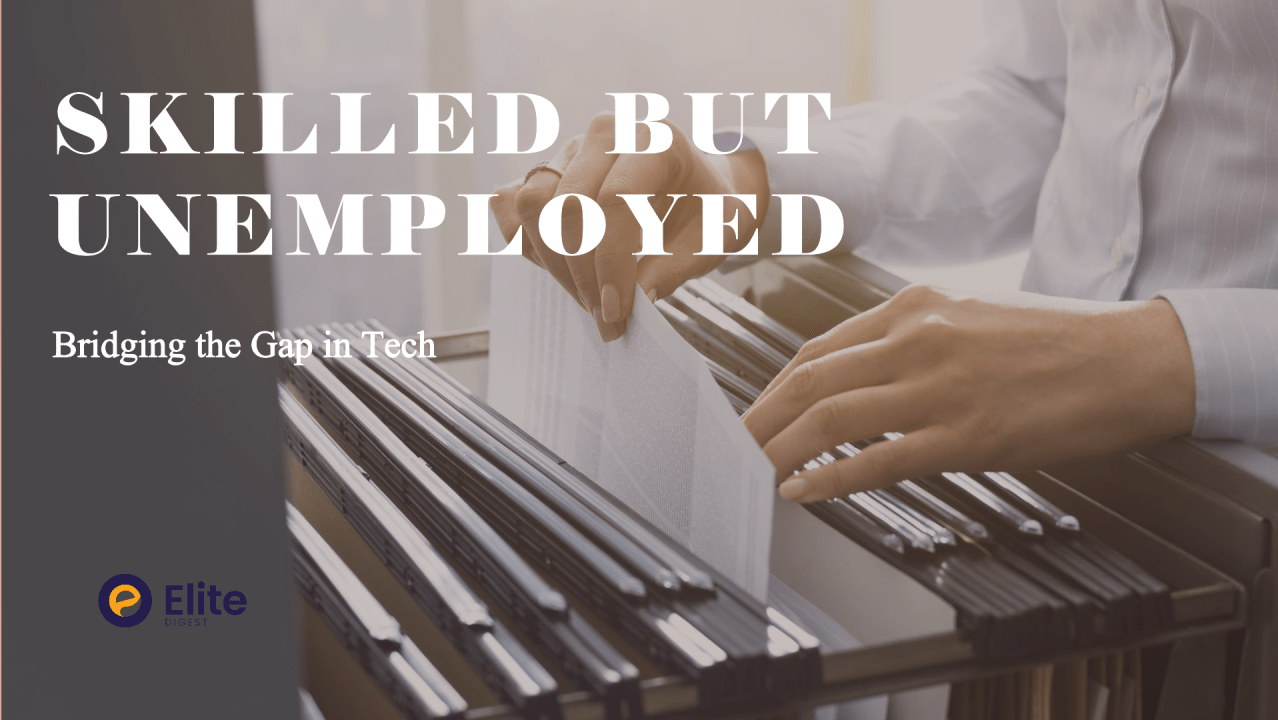Artificial intelligence (AI) is the ability of digital computers to perform tasks similar to those of intelligent beings. It is the science and engineering of making intelligent machines that work and think like humans. This article aims to provide a comprehensive overview of AI, its applications, and its impact on different industries.
What is Artificial Intelligence?
AI is a computer-controlled robot’s ability to perform tasks intelligently, without explicit instructions. It is a smart machine that can learn from experience, change as new information comes in, and do things that humans do. AI relies on machine learning to replicate human intelligence.
How does Artificial Intelligence work?
AI replicates human intelligence through machine learning. Using data from the past and algorithms, it makes a “propensity model” to learn how to respond to certain behaviors. Probability models make forecasts, such as scoring leads. Machine learning works on algorithms that learn on their own using historical data. It operates only in specific domains. AI uses deep learning and natural language processing to do things similar to what humans do. Examples include self-driving cars and computers that can play chess.
What is Machine Learning?
Machine learning is taking knowledge from the data. It allows a computer system to create predictions or carry out some decisions using historical data without explicit programming. Machine learning uses structured and semi-structured data so that a machine learning model can generate accurate results or make predictions based on that data. Machine learning can be divided into three types:
- Supervised learning
- Unsupervised learning
- Reinforcement learning
Supervised learning uses labeled data to train a model, while unsupervised learning uses unlabeled data to find patterns. Reinforcement learning learns by trial and error.
The definition of augmented intelligence
The development of AI technology designed to assist people rather than replace them is highlighted by the concept of “augmented intelligence.”
Applications for “augmented intelligence” combine machine and human intelligence in this way. It is crucial in systems where there is a high chance of failure or if the AI has not advanced enough to replace humans.
Artificial Intelligence industry Market Size 2022
Augmented intelligence combines machine and human intelligence to assist people rather than replace them. It is essential in systems where there is a high chance of failure or if the AI has not advanced enough to replace humans.
Types of AI
There are three types of AI:
- Artificial Narrow Intelligence (ANI)
- Artificial General Intelligence (AGI)
- Artificial Super Intelligence (ASI)
Artificial narrow intelligence is the most common type of AI. These systems are designed to solve one problem and execute a task excellently.
AGI is the logical next step from ANI, while ASI is better than humans at everything, including making decisions and getting along with other people.
Advantages of Artificial Intelligence
AI has several advantages, including:
- Fostering repetitive work
- Improving security
- Serving as a digital assistant
- Availability
- Efficiency in communication
AI Applications In Everyday Life
AI is widely used in everyday life, including:
- Digital personal assistants
- Cybersecurity
- Online shopping
- Machine translations
Top companies in the AI industry
The top companies in the AI industry are:
- International Business Machines Corp (IBM)
- Microsoft Corp
- Alphabet Inc (Google and Youtube parent company)
- Amazon
- Nvidia Corp
- Workday Inc
Examples of Artificial Intelligence
Siri, Alexa, Google Assistant, self-driving cars, Chat GPT, email spam filters, conversational bots, Netflix’s suggestions, automated investing, and Facebook’s suggestions for friends are all examples of AI.
Career Opportunities In AI
There are various career opportunities in AI, such as:
- Research Scientist
- Data Analyst
- Machine Learning Engineer
- AI Engineer
The AI industry is currently worth $387.45 billion, with an anticipated worth of $1394.30 billion by 2029. It is growing at a CAGR of 20.1% from 2022 to 2029.
How to Get Started in AI
If you are interested in pursuing a career in AI or want to learn more about it, here are some steps you can take:
- Learn the basics of computer science: Having a strong foundation in computer science is essential for working with AI. Start by learning programming languages such as Python and R.
- Learn Machine Learning: Machine learning is a fundamental part of AI. It’s important to learn the basics of machine learning, including supervised and unsupervised learning.
- Get involved in projects: To gain practical experience, get involved in AI projects. You can start by contributing to open-source projects or creating your own projects.
- Join a community: Joining an AI community can help you stay up-to-date with the latest trends and connect with other professionals in the field.
- Take online courses: There are many online courses available that can help you learn AI. Some popular online courses include Coursera, edX, and Udacity.
Timeline of events related to Artificial Intelligence.
1943 – A paper with the title “A logical calculus of ideas Immanent in Nervous Activity” was written by McCullough and Walter Pits was published in 1943. It was the first work on Artificial Intelligence and they suggested the neuron model.
1949 – Donald Hebb formulated the theory for modifying the connection strength between neurons in his book titled The Organization of Behavior. A Neuropsychological Theory
1950 – An English mathematician named Alan Turing published “Computing Machinery and Intelligence,” where he proposed a test to determine if a machine can exhibit human behavior. This test is popularly known as the Turin Test. In the same year, Harvard graduates Dean Edmonds and Marvin Minsky built the first neural network computer, which they named SNARC.
1956 – Construction of the “first artificial intelligence program” named “Logic Theorist” by Allen Newell and Hebert A. Simon. This program verified 38 of 52 mathematical theorems, as well as discovered new and more elegant proofs for several of them. In the same year, the word “Artificial intelligence” was first adopted by John McCarthy, an American scientist at the Dartmouth Conference and was coined for the first time in an academic field.
1959 – Arthur Samuel came up with the term Machine Learning while working at IBM.
1963 – John McCarthy started an Artificial intelligence Lab at Standford.
1966 – Joseph Weizenbaum created the first-ever chatbot named ELIZA.
1972 – The first Humanoid robot was built in Japan named WABOT – 1
1974 to 1980 – Known as the AI winter period. Many scientists fell short of funding and could not continue their research.
1980 – AI returned. Digital Equipment Corporations developed R1 which was the first successful commercial expert system and officially ended the A1 winter period. Also, the first-ever national conference of the American Association of Artificial intelligence was organised at Stanford University.
1987 to 1993 – Due to emerging computer technology and other cheaper alternatives, many investors and the government stopped funding AI research leading to the second winter period.
1997 – IBM’s computer IBM Deep Blue defeated the then-world chess champion, Gary Kasparov.
2002 – The advent of vacuum cleaners brought AI into homes.
2005 – The American military started investing in autonomous robots such as Boston Dynamics “Big Dog and iRobot’s “PackBot.”
2006 – Companies like Google, Facebook, Netflix, Twitter started using AI.
2008 – Google made a breakthrough in speech recognition and introduced the speech recognition feature in the iPhone app.
2011 – Wastson – an IBM computer, won Jeopardy in 2011, a game show in which it had to solve complicated questions and riddles.
2012 – Andrew Ng, the Google Brain Deep Learning Project’s founder, fed 10 million Youtube videos into a neural network using deep learning algorithms. The neural network learnt to recognise things before they were told what they were. This marked the beginning of a new era.
2014 – Google built the first self-driving car which passed the driving test. In the same year, Amazon’s Alexa was released.
2016: Hanson Robotics created the first “robot citizen” named Sophia, a humanoid robot capable of facial recognition, facial emotion, and verbal conversation.
2020: When the COVID-19 pandemic was just starting, Baidu made its LinearFold AI algorithm available to scientific and medical teams working on a vaccine. The system could predict the virus’s RNA sequence in just 27 seconds, which was 120 times faster than older methods.
Learn more about what AI can do: How AI Can Help Reduce Fradulent Insurance Claims.
Conclusion
Artificial intelligence is a rapidly growing field with a wide range of applications. It has the potential to revolutionize the way we live and work, and it’s important to stay up-to-date with the latest trends and developments. By learning the basics of computer science and machine learning, getting involved in AI projects, and joining an AI community, you can take the first step towards a career in this exciting field.
Have you decided to start a career in tech, here are some related articles you can look up.
You can sign up for our Elite Digest newsletter to receive timely updates on our newest posts.










